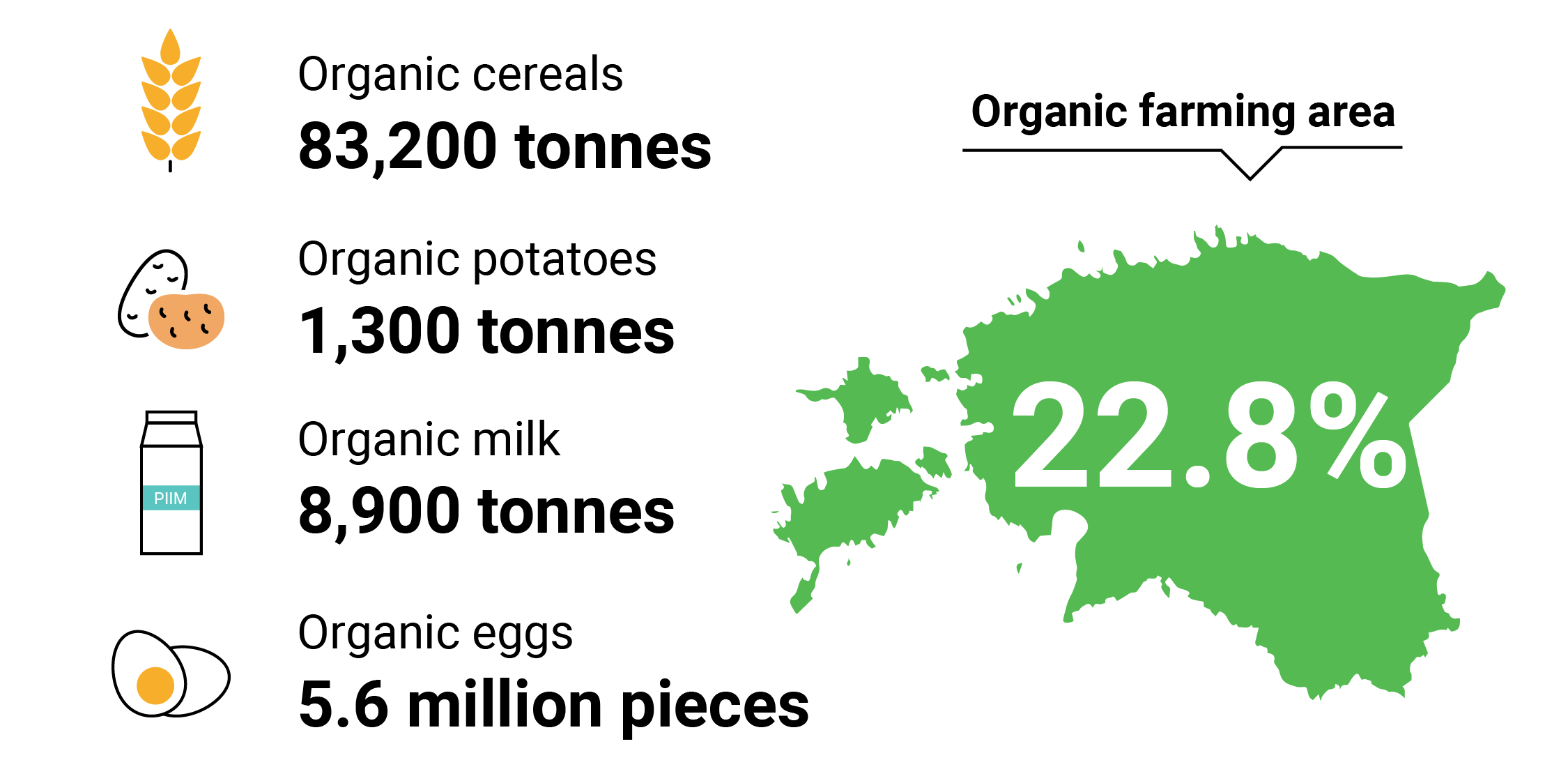Organic farming area and number of organic livestock decreased last year
According to Statistics Estonia, in 2023, the organic farming area in Estonia was 225,300 hectares, representing 22.8% of total utilised agricultural area. 92% of the organic farming area was fully converted and the rest was under conversion. Compared with 2022, the organic farming area decreased by 2.5%, and 78 organic producers ceased activities.
Ege Kirs, leading analyst at Statistics Estonia, said that the organic farming area in Estonia had previously increased with each year and its share had put Estonia at the top in Europe, but last year the area used for organic farming decreased and Estonia also fell further from the 25% target defined in the Farm to Fork Strategy. “Like in agriculture overall, it was a difficult year for organic farmers – harvested production declined for many crops, the number of livestock decreased, and several organic producers went out of business,” noted Kirs.
Last year, fully organic crop farming included cereals grown on 47,600 hectares, dry pulses on 6,000 hectares, vegetables and strawberries on 240 hectares, and potatoes on 110 hectares. There were 2,200 hectares of organic fruit and berry plantations. The total production of organic cereals was 83,200 tonnes, which is 31% less than the year before. Holdings produced 1,300 tonnes of organic potatoes and 640 tonnes of organic fruits and berries, whereas the production of organic fruits and berries fell by half year on year.
The yields per hectare in organic farming are usually significantly lower than in conventional farming, since organic farming does not use any artificial mineral fertilisers or pesticides. Last year, the average yield of cereals was 3.4 tonnes per hectare, compared to 1.7 tonnes per hectare for organic cereals. The yield of potatoes was 24.5 tonnes per hectare, on average, and 11.7 tonnes for organic potatoes.
In 2023, the organic livestock in Estonia included 42,300 cattle, 25,400 sheep and goats, 670 pigs, and 26,600 laying hens. Organic farming is more popular among cattle and sheep and goat farmers, as 18% of cattle and 43% of sheep and goats are organically farmed. Last year, the numbers of livestock decreased for all kinds of animals farmed organically. 5.6 million eggs and 8,900 tonnes of milk were produced organically. In addition to drinking milk, there were other organic milk products produced, including 240 tonnes of cheese, 208 tonnes of acidified milk products, and 16 tonnes of cream and butter.
Statistics Estonia produces organic farming statistics based on the data of the organic farming register of the Agriculture and Food Board. The data on organic production cover only fully organic products.
See also the agriculture section on our website.
More detailed data have been published in the statistical database.
When using Statistics Estonia’s data and graphs, please indicate the source.
For further information:
Heidi Kukk
Media Relations Manager
Marketing and Dissemination Department
Statistics Estonia
Tel +372 625 9181
press [at] stat.ee (press[at]stat[dot]ee)
